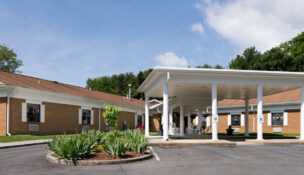Va. agricultural damage from Helene totals $159.3M
Grayson County saw biggest losses among 21 localities

Virginia Cooperative Extension agents calculated $159.3 million in losses from an estimated 3,672 farms in 21 Virginia localities. Photo by Case Keatley, courtesy Virginia Tech

Virginia Cooperative Extension agents calculated $159.3 million in losses from an estimated 3,672 farms in 21 Virginia localities. Photo by Case Keatley, courtesy Virginia Tech
Va. agricultural damage from Helene totals $159.3M
Grayson County saw biggest losses among 21 localities
Hurricane Helene’s agricultural damage in Virginia totals more than $159.3 million, according to Virginia Cooperative Extension agents’ research.
Hurricane Helene made landfall on the Gulf Coast in Florida as a Category 4 storm late on Sept. 26 and tore through the Southeast into Sept. 27, causing catastrophic flooding in parts of Georgia, North and South Carolina, Virginia and Tennessee even as it weakened. The storm’s death toll totals more than 220 across six states.
The extension agents worked across 21 localities — 20 counties and the city of Radford — to complete the agricultural damage assessment, and the Virginia Department of Forestry provided information on timber losses, according to a Tuesday news release from Virginia Tech.
According to the report, 3,672 Virginia farms suffered losses from hurricane damage.
Of the 21 localities, Grayson County had the biggest losses, amounting to $61 million — 38% of the statewide damage. Wythe, Smyth, Washington and Carroll counties were the next four localities with the most economic losses from the hurricane, with respective damages of approximately $22.7 million, $18.4 million, $12.9 million and $12.1 million.
“Farming is a critical contributor to the rural economies where these losses occurred,” Dan Goerlich, the extension’s associate director for economy, community and food, said in a statement. “It is our hope that this assessment will help guide resources for recovery to these farms and communities that are so vital to Virginia’s economic prosperity.”
Virginia vegetable and crop damage totaled an estimated $38.1 million. Of those, the heaviest losses came from timber ($25.9 million), hay ($3.3 million) and pumpkins ($2.3 million).
Livestock, aquaculture and apiary losses amount to $1.5 million, with beef cattle producers losing $1.2 million. Trout producers’ losses came to about $130,700, and damages to dairy cow farmers were about $15,250.
Facilities, land and infrastructure losses totaled $119.6 million, with damage to fencing, structures and land comprising the largest losses. Damage to fencing totaled $54.3 million, and structure damage accounted for an estimated $27.8 million. Land damage and debris removal represented an estimated $25.5 million.
Established in 1914, Virginia Cooperative Extension is a partnership between Virginia Tech and Virginia State University. It operates out of 107 offices, 11 agricultural research and extension centers and six 4-H centers.
Extension agents have set up 10 centers around the region for collecting and distributing supplies for recovery efforts. They’re also hosting hay donation days on Saturdays throughout November. The extension, Virginia Cattlemen’s Association, Virginia Farm Bureau, Virginia Agribusiness Council and Farm Credit of the Virginias have partnered to form the Southwest Virginia Agricultural Relief Program, which connects farmers with volunteers and hay, feed, fencing and other donations.
s
















